Loans are another type of financial aid offered to help students pay for college. It is money that you borrow and must be paid back with interest.
What Do I Need to Know Before I Borrow?
Federal Student Loans
Direct Subsidized Loans and Direct Unsubsidized Loans are federal student loans offered by the U.S. Department of Education (ED) to help eligible students cover the cost of higher education. Awards are determined by using the information provided on the FAFSA and your Cost of Attendance. The amount of your awards also depends on your Dependency Status and Grade Level.
- Direct SUBSIDIZED loans are offered to students who demonstrate financial need. Interest is paid by the federal government while the student is enrolled at least half-time status (6 credits or more) and up to 6 months after graduation.
- Direct UNSUBSIDIZED loans are typically offered to students who do not demonstrate financial need. The student is responsible for interest during all periods, from the time the loan is disbursed. If the student does not pay the interest while they are in school and during grace periods, deferment periods, or forbearance periods, the interest will accrue (accumulate) and be capitalized (added to the principal amount of the loan).
Interest Rates
Student loans are subject to interest rates which may be variable/fixed. View current interest rates.
Loan Fees
Student loans are subject to a loan fee of approximately 1% of your loan, which will be automatically deducted from each loan disbursement.
Disbursement
All student loans require two separate disbursements, one at the beginning of the loan period and the second at the midpoint of the loan period. In addition, first-year, first-time borrowers are required to complete 30 days of their first semester before receiving their first loan disbursement.
Repayment
Repayment begins six months (grace period) after the student ceases to be enrolled at least half-time, graduate, completely withdraw, transfer, or stop attending classes.
Annual Loan Limits
| Dependency Status & Grade Level | Base (Subsidized & Unsubsidized) | Additional Unsubsidized | Maximum Combined |
|---|---|---|---|
| Dependent Freshmen | $3,500 | $2,000 | $5,500 |
| Dependent Sophomore | $4,500 | $2,000 | $6,500 |
| Independent Freshmen | $3,500 | $6,000 | $9,500 |
| Independent Sophomore | $4,500 | $6,000 | $10,500 |
Aggregate Loan Limits
| Aggregate (LIFETIME) Limits for Subsidized and Unsubsidized Loans | Subsidized | TOTAL Subsidized and Unsubsidized |
|---|---|---|
| Dependent Undergraduates | $23,000 | $31,000 |
| Independent Undergraduates and Dependent Students whose parents are ineligible for the PLUS Loan | $23,000 | $57,500 |
Before you decide to borrow and how much to borrow, consider how much financing you will need to cover your educational cost.
Student A: Full time student – 12 credits each semester
| Financial aid offered | Pell Grant: $7,395 Loan: $5,500 |
| Direct costs to attend college full time | Tuition: $3,144 Fees: $79 Books/Supplies: $1,350 Total educational cost: $4,573/year |
| Off-campus living costs | Student plans to live at home with parents and has some savings, so decides there will be no additional living expenses that need to be covered (housing, food, or transportation and personal expenses). |
Since the Pell Grant is more than enough to cover the direct costs, Student A decides they do not need a loan at this time.
Student B: Full time student – 12 credits each semester
| Financial aid offered | Pell Grant: $7,395 Loan: $10,500 |
| Direct costs to attend college full time | Tuition: $3,144 Fees: $79 Books/Supplies: $1,350 Total educational cost: $4,573/year |
| Off-campus living costs | Student lives off-campus with roommate. Rent/utilities: $1000/month Groceries: $400/month Transportation: $150/month Personal Expenses: $100/month Total living cost per month: $1,650 Total living cost (9 months): $14,850 |
| Part-time work | Earns $1,000/month Total: $9,000 for 9 months |
| Total cost to attend full-time | Total educational cost: $4,573 Total living cost: $14,850 Total: $19,423 Pell Grant: ($7,395) Student Income: ($9,000) Student needs approximately $3,527 to cover remaining cost |
Student considers options such as decreasing expenses, increasing work hours and applying for scholarships. If options don’t work out, student may borrow up to $10,500 to cover the difference.
Student A: Half time student – 6 credits each semester
| Financial aid offered | Pell Grant: $3,698 Loan: $5,500 |
| Direct costs to attend college half time | Tuition: $1,572 Fees: $79 Books/Supplies: $1,350 Total educational cost: $3,001/year |
| Off-campus living costs | Student plans to live at home with parents and has some savings, so decides there will be no additional living expenses that need to be covered (housing, food, or transportation and personal expenses). |
Since the Pell Grant is more than enough to cover the direct costs, Student A decides they do not need a loan at this time.
Student B: Half time student – 6 credits each semester
| Financial aid offered | Pell Grant: $3,698 Loan: $10,500 |
| Direct costs to attend college half time | Tuition: $1,572 Fees: $79 Books/Supplies: $1,350 Total educational cost: $3,001/year |
| Off-campus living costs | Student lives off-campus with roommate. Rent/utilities: $1000/month Groceries: $400/month Transportation: $150/month Personal Expenses: $100/month Total living cost per month: $1,650 Total living cost (9 months): $14,850 |
| Part-time work | Earns $1,000/month Total: $9,000 for 9 months |
| Total cost to attend half-time | Total educational cost: $3,001 Total living cost: $14,850 Total: $17,851 Pell Grant: ($3,698) Student Income: ($9,000) Student needs approximately $5,153 to cover remaining cost |
Student considers options such as decreasing expenses, increasing work hours and applying for scholarships. If options don’t work out, student may borrow up to $10,500 to cover the difference.
If you are interested in applying for a student loan, complete the Loan Request Form:
HonCC 2023-2024 Student Loan Request Form
Additional Information about Student Loans
Federal Direct Subsidized and Unsubsidized Student Loans
How Much Have I Borrowed?
If you are a previous borrower, to review your outstanding balance and preview what your monthly payments might be:
- Go to Federal Student Aid
- Log in with your FSA ID and password
- Under your name on the top right corner, click on “My Aid”
Code of Conduct for Educational Loans
A University of Hawai’i financial aid employee is expected to always maintain exemplary standards of professional conduct in all aspects of carrying out his or her responsibilities, specifically including all dealings with any entities involved in any manner in student financial aid, regardless of whether such entities are involved in a government sponsored, subsidized, or regulated activity.


